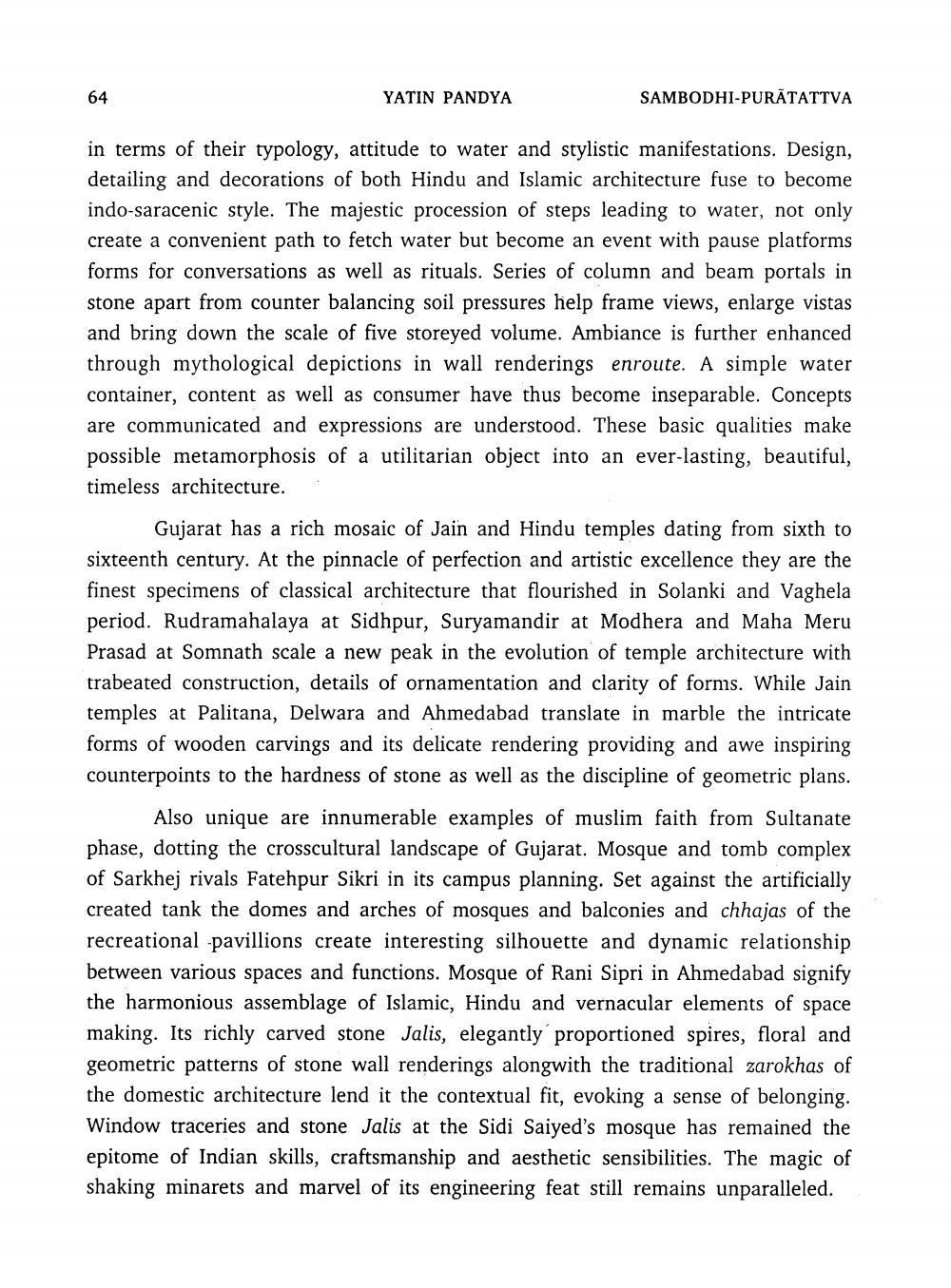________________
64
YATIN PANDYA
SAMBODHI-PURĀTATTVA
in terms of their typology, attitude to water and stylistic manifestations. Design, detailing and decorations of both Hindu and Islamic architecture fuse to become indo-saracenic style. The majestic procession of steps leading to water, not only create a convenient path to fetch water but become an event with pause platforms forms for conversations as well as rituals. Series of column and beam portals in stone apart from counter balancing soil pressures help frame views, enlarge vistas and bring down the scale of five storeyed volume. Ambiance is further enhanced through mythological depictions in wall renderings enroute. A simple water container, content as well as consumer have thus become inseparable. Concepts are communicated and expressions are understood. These basic qualities make possible metamorphosis of a utilitarian object into an ever-lasting, beautiful, timeless architecture.
Gujarat has a rich mosaic of Jain and Hindu temples dating from sixth to sixteenth century. At the pinnacle of perfection and artistic excellence they are the finest specimens of classical architecture that flourished in Solanki and Vaghela period. Rudramahalaya at Sidhpur, Suryamandir at Modhera and Maha Meru Prasad at Somnath scale a new peak in the evolution of temple architecture with trabeated construction, details of ornamentation and clarity of forms. While Jain temples at Palitana, Delwara and Ahmedabad translate in marble the intricate forms of wooden carvings and its delicate rendering providing and awe inspiring counterpoints to the hardness of stone as well as the discipline of geometric plans.
Also unique are innumerable examples of muslim faith from Sultanate phase, dotting the crosscultural landscape of Gujarat. Mosque and tomb complex of Sarkhej rivals Fatehpur Sikri in its campus planning. Set against the artificially created tank the domes and arches of mosques and balconies and chhajas of the recreational -pavillions create interesting silhouette and dynamic relationship between various spaces and functions. Mosque of Rani Sipri in Ahmedabad signify the harmonious assemblage of Islamic, Hindu and vernacular elements of space making. Its richly carved stone Jalis, elegantly proportioned spires, floral and geometric patterns of stone wall renderings alongwith the traditional zarokhas of the domestic architecture lend it the contextual fit, evoking a sense of belonging. Window traceries and stone Jalis at the Sidi Saiyed's mosque has remained the epitome of Indian skills, craftsmanship and aesthetic sensibilities. The magic of shaking minarets and marvel of its engineering feat still remains unparalleled.




